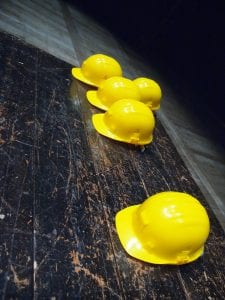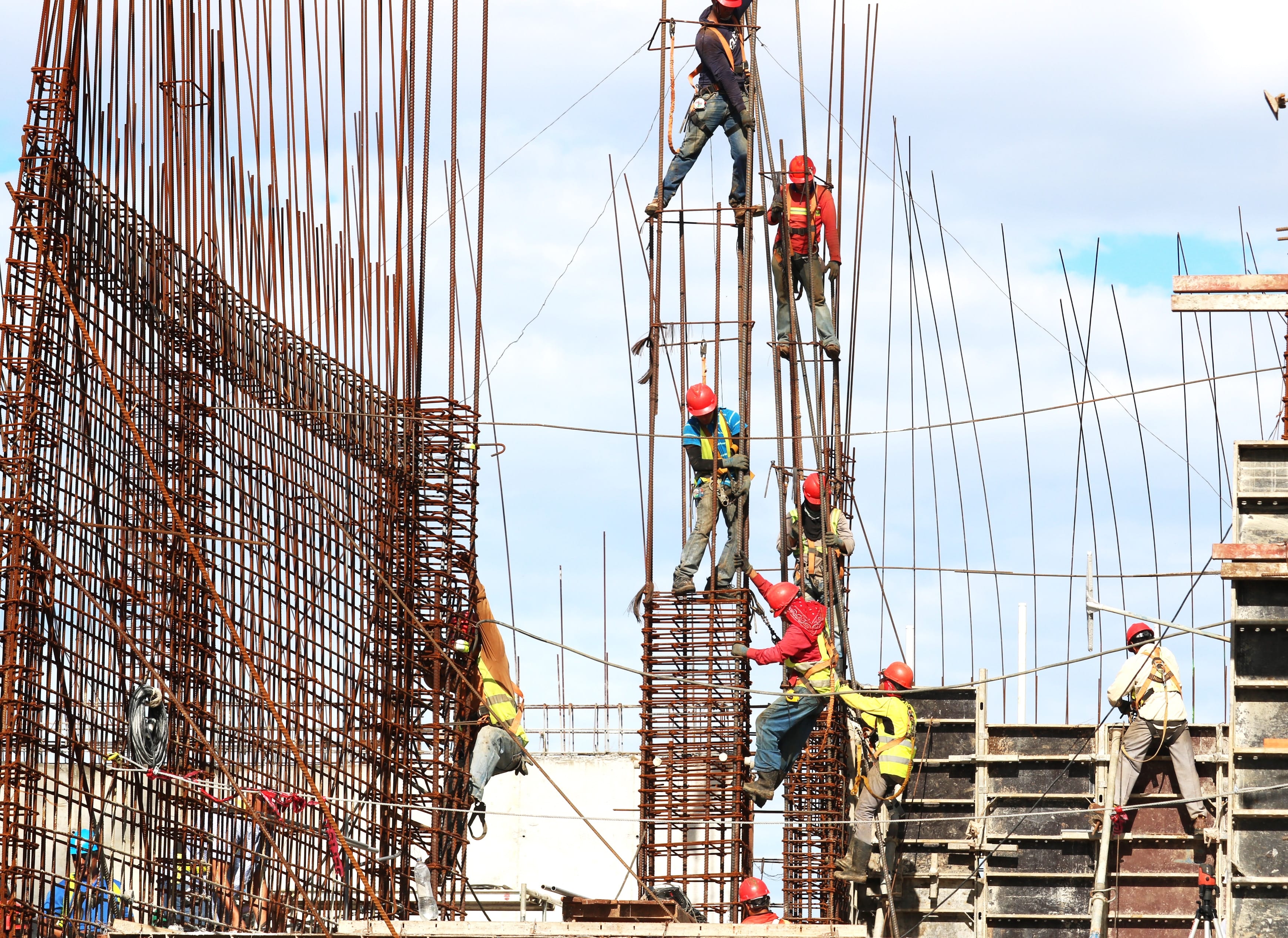Construction is a potentially dangerous field. OSHA has provided a framework of safety practices that have reduced injuries and fatalities.
1970 marked the year that the Occupational Safety and Health Act was enacted. This act was established to ensure that standard safety practices would be employed in the workplace to avoid unnecessary injury or death. The Act required employers to provide safe working environments that were free from known dangers. The Act led to the establishment of the Occupational Safety and Health Administration, or OSHA, to oversee workplace safety and to set and enforce the standards of a safe and healthy workplace.
What are the OSHA Safety Standards?
OSHA’s safety standards are the rules that outline the methods that employers must employ to ensure the safety of their employees.
Each industry has its own set of OSHA standards, including construction work, maritime operations, and general industry.
The standards created by OSHA limit hazardous chemical exposure, and require employers to monitor other hazards in the workplace. Employers must keep records of workplace injuries and illnesses and use safe practices to try to prevent them.
In addition, employers must comply with the General Duty Clause that requires them to keep their workplace free of serious recognized hazards. Usually, this clause is cited when there is no specific standard to apply to a hazard in the workplace.
What is the ISO Standard for Health and Safety?
Before 2014, OSHA used something called the OSHAS 18001 for standard workplace safety practices.
OSHA then created the first draft of the ISO known as ISO 45001. It replaced the OSHAS 18001 for safety standards.
While many of the same themes and ideas were used in the ISO 45001 as in the OSHAS 18001, there were some key differences.
Instead of just focusing on the immediate health and safety issues for employees, ISO 45001 attempts to look at a bigger picture. David Smith, chairman of the committee that developed the new standard, explained that this standard was looking at the “context” of each organization, instead of just the safety of internal employees.
This context includes the contractors and suppliers that a business may use. It also includes how a workplace might affect their neighbors and surrounding areas.
In addition, the ISO 45001 includes more involvement from top management and leadership. The new standards insist that management systems of an organization take a more active role in overseeing and developing health and safety measures in the workplace. This is a change from previous years when higher management people may have left all safety issues to a safety manager rather than integrating safety directly into the organization’s operations.
One of the greatest advantages of the ISO 45001 is that it has included international safety standards, instead of only focusing on the United States. Many countries from around the world helped develop this standard including countries from Europe, North America, Africa, Asia, and South America. The International Labour Organization also had a strong involvement in the development of the ISO 45001.
How can OSHA Help in Construction Safety?
OSHA has greatly helped the construction industry’s health and safety over the past 49 years. Worker deaths have dropped from 38 per day to 14 per day since OSHA began. In addition, workplace injuries have dropped from 10.9 incidents per 100 workers in 1972 to 2.8 incidents per 100 workers in 2017.

Still, more lives would be saved if OSHA’s standards were observed more closely. In 2017, there were 5,147 work fatalities in the United States, averaging more than 99 deaths a week.
In regards to construction safety, there is something known as the “Fatal Four.” These are the four major areas that have led to injury or death. These include:
- Falls
- Being struck by an object
- Electrocution
- Being caught in between something
In 2017, 20.7 percent of fatal accidents in the workplace happened in construction. According to OSHA,
“Nearly 6.5 million people work at approximately 252,000 construction sites across the nation on any given day. The fatal injury rate for the construction industry is higher than the national average in this category for all industries.”
The “Fatal Four” were responsible for almost 60% of these construction worker’s deaths. If these accidents were eliminated, it would save the lives of 582 workers annually.
In the 2018 fiscal year, the top ten most cited OSHA standard violations included:
- Not using proper fall protection.
- Not using a proper hazard communication standard.
- Not following scaffolding requirements.
- Not using proper respiratory protection.
- Not properly controlling hazardous energy.
- Not following OSHA standards for use of ladders.
- Not using proper safety with the use of powered industrial trucks.
- Not using proper training requirements for fall protection.
- Not following OSHA standards for Machinery and Machine Guarding.
- Not utilizing proper eye and face protection.
What are the Recommended Practices for Safety and Health Programs?
OSHA has issued a worker safety series outlining the most important aspects of a worksite broken down by industry.
For construction safety, they’ve covered the major areas that are most often cited. Below is an outline of some of the items covered in the OSHA Pocket Guide for Construction.
Scaffolding
Scaffolding may become dangerous when it is not erected or used properly. It’s also commonly used in construction which makes it an important consideration for safety practices.
Some things to be aware of when working on scaffolding:
- Scaffolding should not be supported by unstable objects such as boxes, barrels, or loose bricks.
- Scaffolding must be sound and able to carry its own weight plus four times the maximum intended load without settling or displacement.
- All scaffolding must have guardrails, mid-rails, and toeboards.
Fall Protection
Each year, falls account for the largest percentage of construction workplace accidents. In 2017, they accounted for almost 40 percent of construction fatalities.
To reduce the risk of falling, keep in mind these items:
- Use guardrail systems with toeboards or control line systems for workers who are working near edges of floors or roofs.
- Cover any floor holes.
- Another solution is using safety net systems or personal fall arrest systems.
Hazard Communication
Hazard communication refers to the practice of disseminating information about potentially hazardous chemicals in the workplace. Improper hazard communication and education can result in chemical burns, respiratory issues, fires, and explosions.
To avoid these accidents, follow these guidelines:
- Keep a Material Safety Data Sheet (MSDS) for each chemical used in the workplace.
- Make the information accessible by all employees.
- Train employees about the MSDS.
- Train employees about every hazardous chemical being used.
- Have a written spill control plan in place.
- Train employees of the proper way to clean up chemical spills.
- Provide spill clean-up kits.
Cranes
Cranes can be a vital part of a construction worksite, but they’re not without risks. Cranes must be inspected and used properly.
Here are some guidelines OSHA has outlined to avoid injury or death:
- Check all controls in the crane before using it.
- Check wire rope, chains, and hook for any signs of damage.
- Make sure to know the weight limits of the crane and do not lift loads heavier than intended use.
- Never move or load over workers — most accidents occur when a worker is struck by an overhead load or caught in the crane’s swing radius.
Ladders and Stairways
Ladders and stairways are another source of injuries and fatalities in a construction workplace.
To avoid accidents, here are some of OSHA’s recommendations:
Ladders
- Make sure to choose the proper ladder for the task.
- Ensure that a ladder is free from defects like structural damage, bent rails, or missing rungs.
- Tag damaged ladders or destroy them immediately.
- Do not overload ladders beyond their maximum intended load.
Stairways
- Ensure that stairways are free from dangerous objects, debris, and clutter.
- Make sure that any slippery conditions on stairs are tended to immediately.
- Stairways with four or more risers, or stairways that rise more than 30 inches, must have at least one handrail.
Electrical Safety
Electrocution is one of the leading causes of injury and fatality in a construction work zone. That’s why it’s imperative to follow OSHA’s guidelines for safety. Here are some of their guidelines:
- Workers must be prohibited from working on any new or existing electrical circuits until all power is shut off and grounds are attached.
- Make sure that all damaged, frayed, or worn electrical cords are replaced.
- Extension cords must have grounding prongs.
- Electrical tools and equipment must be free from defect and inspected routinely.
- Ladders, scaffolding, equipment, and materials should always be at least 10 feet away from electrical power lines.
Personal Protective Equipment
When on a construction site, it’s vital that each worker uses personal protective equipment (PPE) to ensure their safety.
PPE items used in construction include:
- Eye and face protection – safety glasses or face shields
- Hand protection – gloves that are right for the job
- Head protection – hard hats
The Occupational Safety and Health Administration has made great strides in decreasing workplace injury and fatalities since its creation in 1970. While the number has greatly reduced, there are still many accidents in the construction industry every year.
However, by closely following the standards set forth by OSHA, there is great potential to drastically reduce workplace accidents.


Join the conversation!